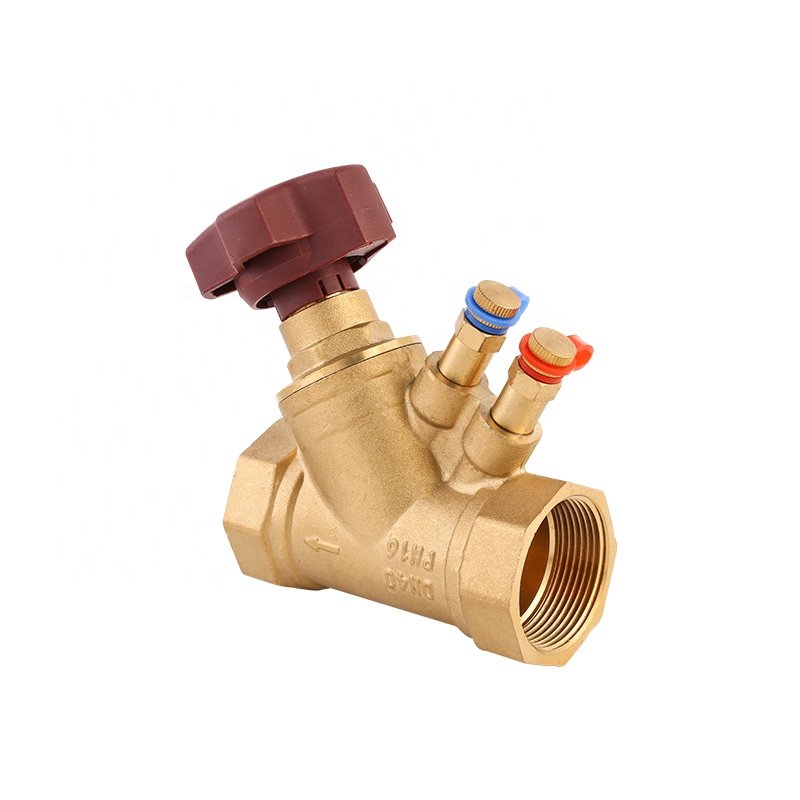Imagine your plumbing system struggling to keep water flow even—some areas get too much pressure, others barely a trickle. This imbalance can waste energy, damage pipes, and spike your costs. A balancing valve for chilled water or heating systems fixes this mess, ensuring steady flow and efficiency. Let’s dive into how these valves work and why they’re a game-changer for your setup.
The principle of a balancing valve in plumbing is simple: it regulates water flow to ensure consistent pressure and flow rate across a system. By adjusting resistance, it balances the distribution of fluid, preventing overpressure in some areas and underflow in others. This ensures efficient operation, reduces energy waste, and extends the lifespan of your plumbing.
This explanation just scratches the surface. Stick around to uncover the nuts and bolts of balancing valves, their functions, and why they outshine other options for your business.

What is the Function of the FCV Valve?
A Flow Control Valve (FCV), often linked to a balancing valve symbol in plumbing diagrams, plays a big role in keeping systems running smoothly. Its main job? Controlling the flow rate of water or other fluids to match what your setup needs. Think of it like a traffic cop for your pipes, making sure every section gets just the right amount of flow—no more, no less.
Why does this matter? In large buildings or industrial setups, uneven flow can cause chaos. For example, in a chilled water system, an FCV ensures every cooling unit gets enough water to work properly. Without it, some areas might overheat while others waste energy. Plus, a well-installed balancing valve for chilled water cuts down on pump strain, saving you money on maintenance and power bills.
FCVs also shine in flexibility. Whether you’re running a heating system or a complex plumbing network, these valves adapt to changing demands. They’re a must-have for wholesalers or construction projects aiming for efficiency and reliability. Curious about how they’re set up? A quick look at a balancing valve diagram shows how they integrate into your system for maximum impact.
What is the Principle of an Automatic Valve?
Now, let’s talk about automatic balancing valves and how they work. Unlike manual valves, these smart devices adjust flow on their own, reacting to pressure changes in real time. The secret lies in their design—usually a spring-loaded mechanism or a pressure-sensitive cartridge. When pressure spikes or drops, the valve tweaks itself to keep the flow steady. It’s like having a built-in engineer watching your system 24/7.
Picture a busy plumbing network in a commercial building. Without an automatic balancing valve installation, you’d need constant manual tweaks to avoid hot spots or weak flow zones. That’s a headache for any purchasing officer or wholesaler. Automatic valves eliminate this hassle, ensuring consistent performance with zero babysitting. A balancing valve how it works breakdown shows they maintain preset flow rates, no matter how crazy the system gets.
This hands-off approach also boosts energy savings. By preventing overpressure, these valves reduce pump workload and cut electricity costs. For businesses exporting to markets like Germany or the UK, where efficiency is king, automatic balancing valves are a no-brainer. They’re reliable, low-maintenance, and perfect for modern plumbing demands.
What are the Disadvantages of Manual Valves?
Manual balancing valves might seem like a budget-friendly choice, but they come with some serious downsides. First off, they need constant tweaking. Every time your system’s demand changes—say, during peak hours or seasonal shifts—someone’s got to adjust the valve by hand. That’s a pain for busy plumbing wholesalers or construction crews who don’t have time to spare.
Another issue? Human error. If the valve’s set wrong, you could end up with uneven flow, stressing your pipes or HVAC system. This can lead to costly repairs or even system failures—bad news for DIY chain stores or project managers. Unlike automatic valves, manuals don’t adapt to pressure changes. A quick glance at a balancing valve diagram shows how manual setups lack the dynamic response of their automatic cousins.
Energy waste is a biggie too. Manual valves often lead to over- or under-flow, forcing pumps to work harder. That’s a hit to your bottom line, especially in markets like Russia or Poland where operational costs are scrutinized. For large-scale projects, sticking with manual valves can feel like driving a clunky old car when you could have a sleek, efficient machine.
Wrapping It Up
Balancing valves, whether manual or automatic, are the unsung heroes of efficient plumbing systems. They keep water flow steady, save energy, and protect your setup from costly damage. Automatic valves, with their self-adjusting magic, take the lead for hassle-free performance, while manual ones lag with their need for constant attention. Understanding what is a balancing valve in plumbing and how it fits into your system—check that balancing valve installation guide—can transform your operations. For wholesalers, contractors, or procurement officers, choosing the right valve means happier clients and fewer headaches.
Choose IVALVECRAFT, choose reliable partner, enjoy the high quality and best service.


